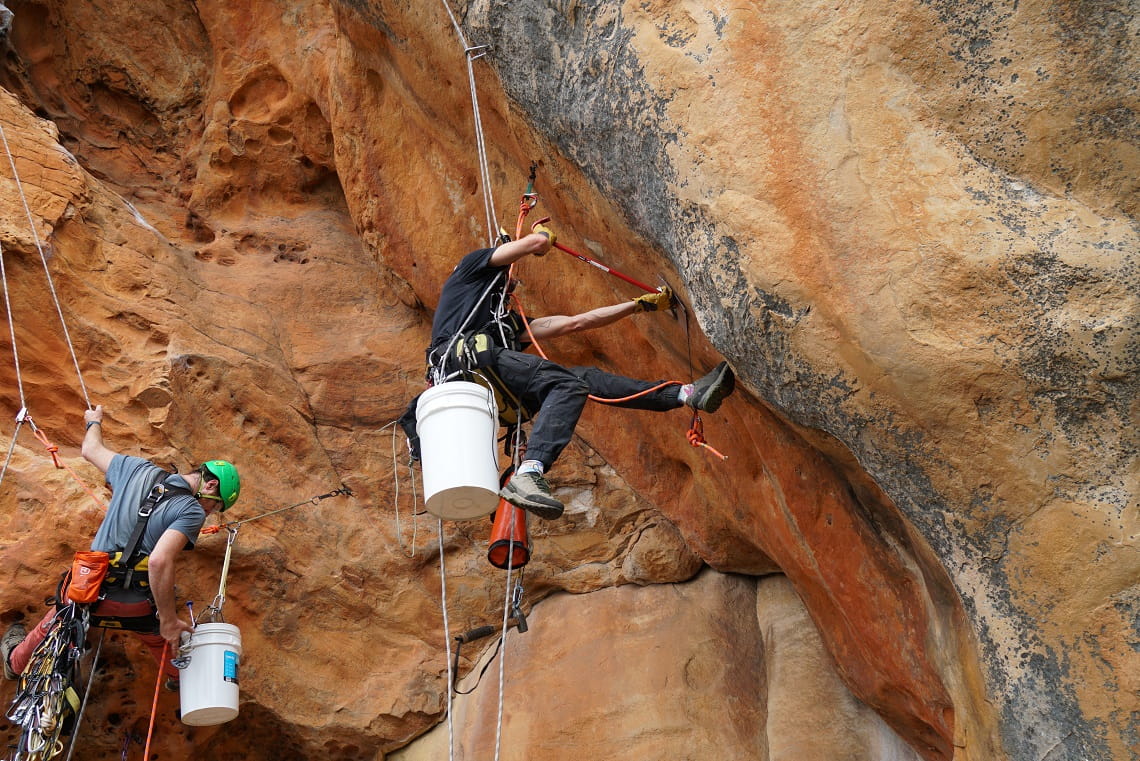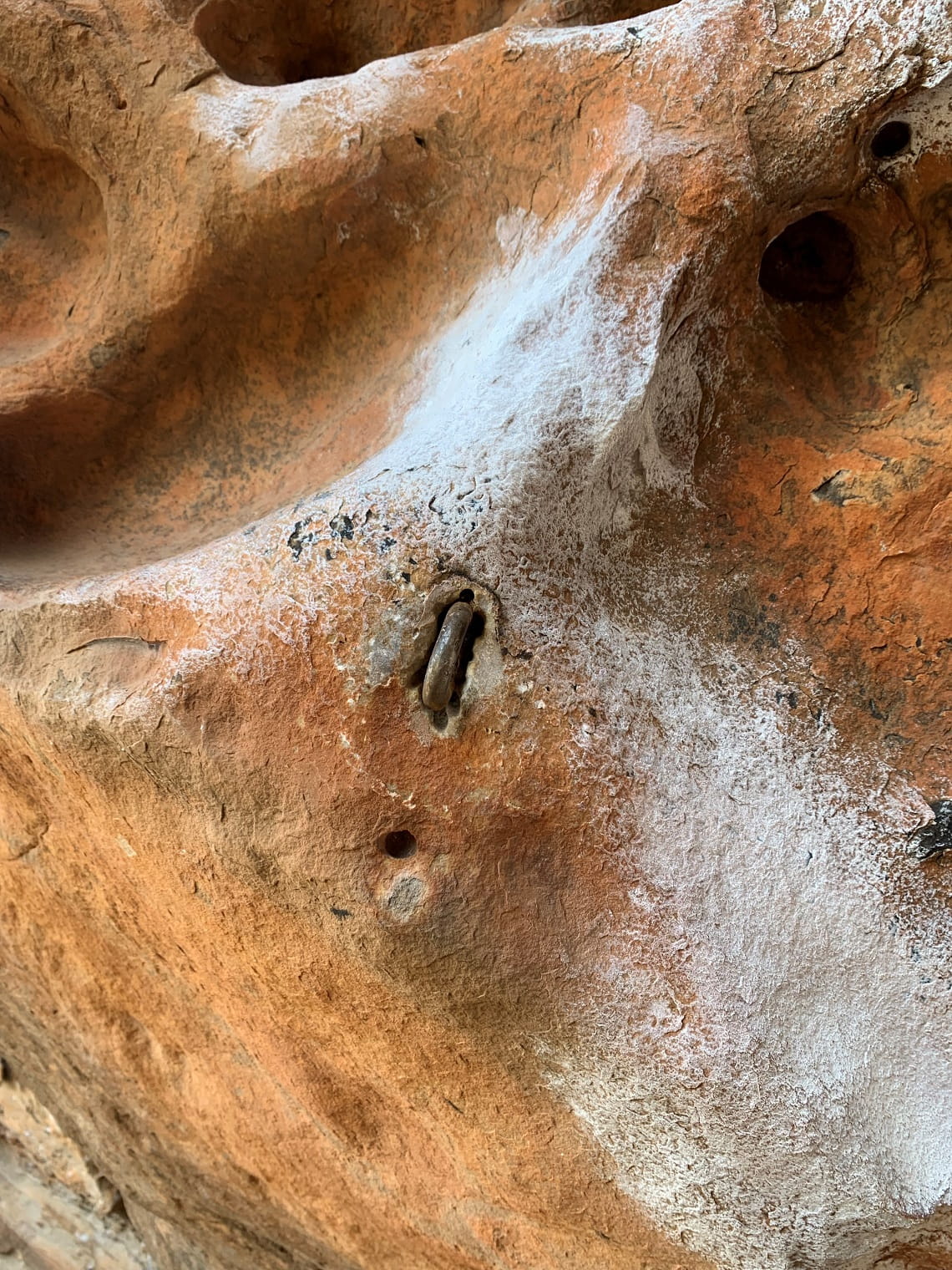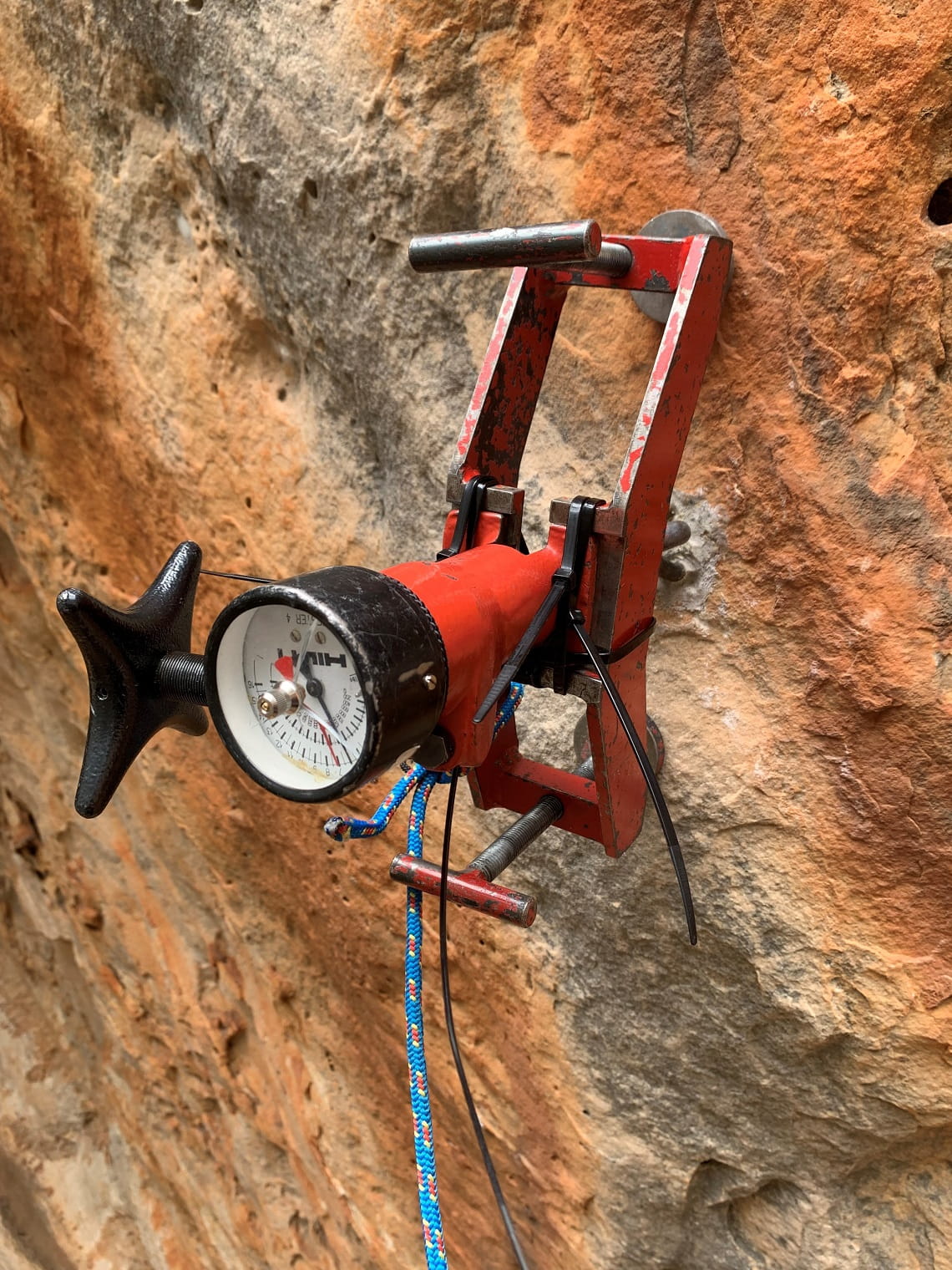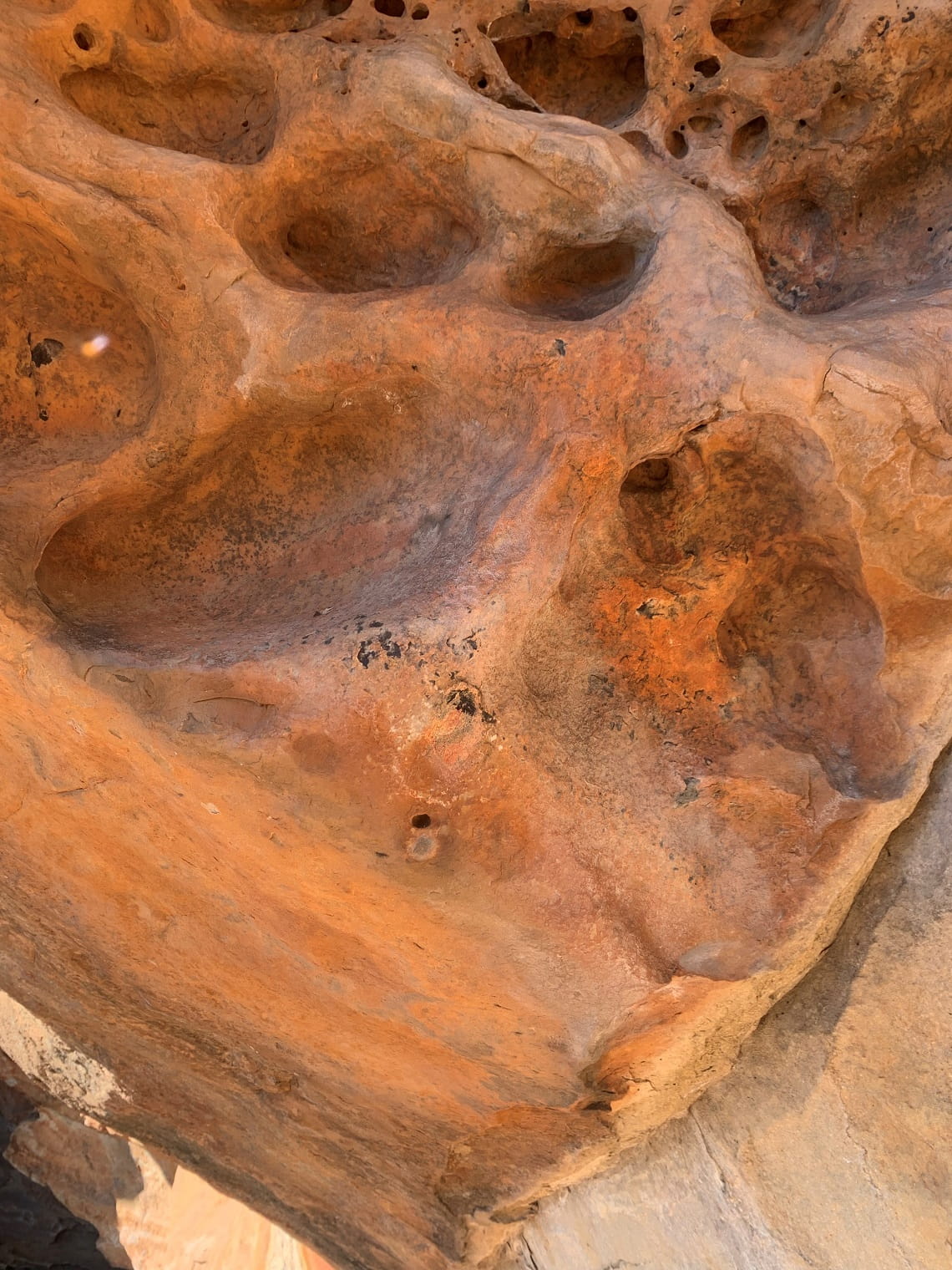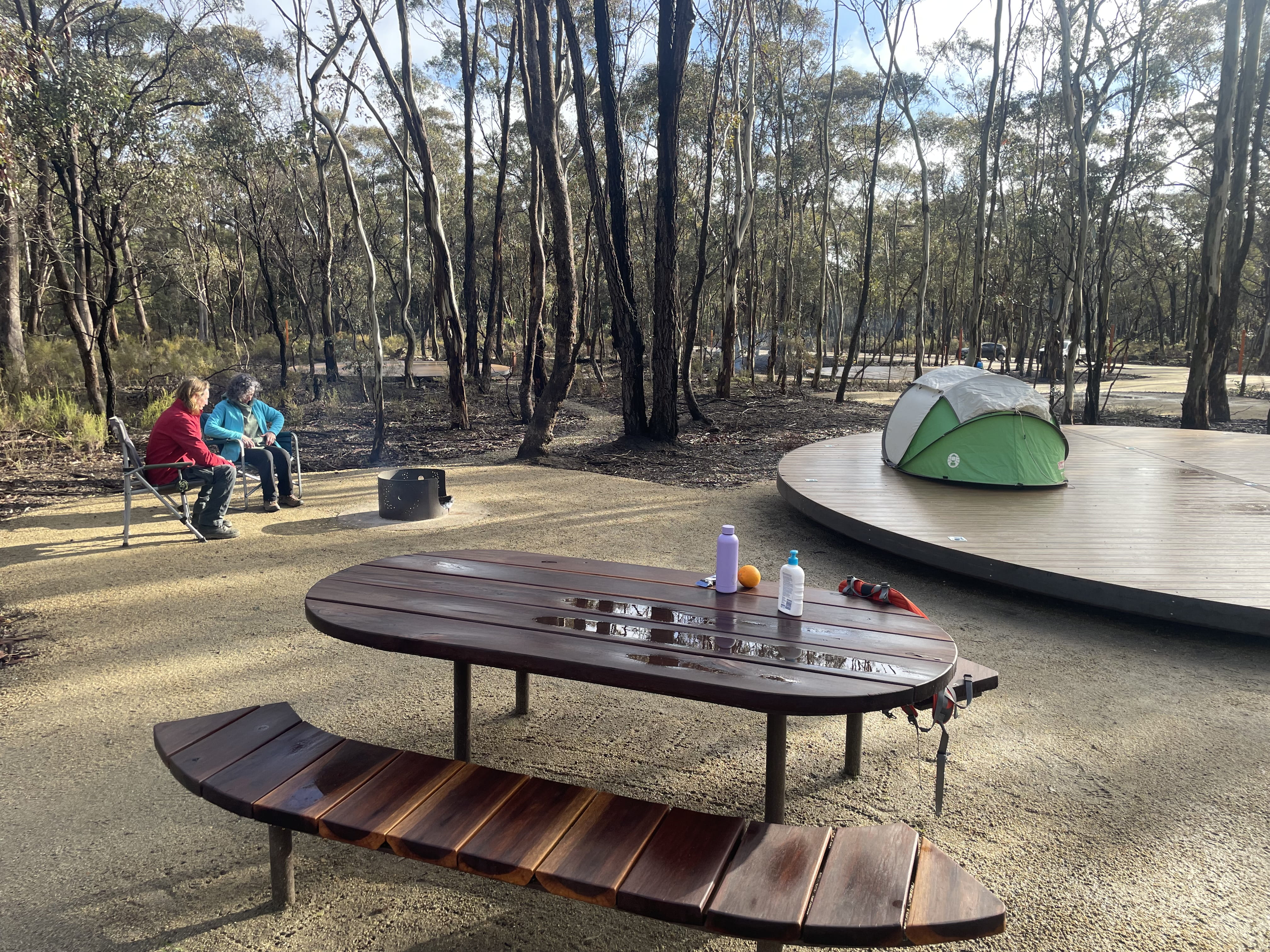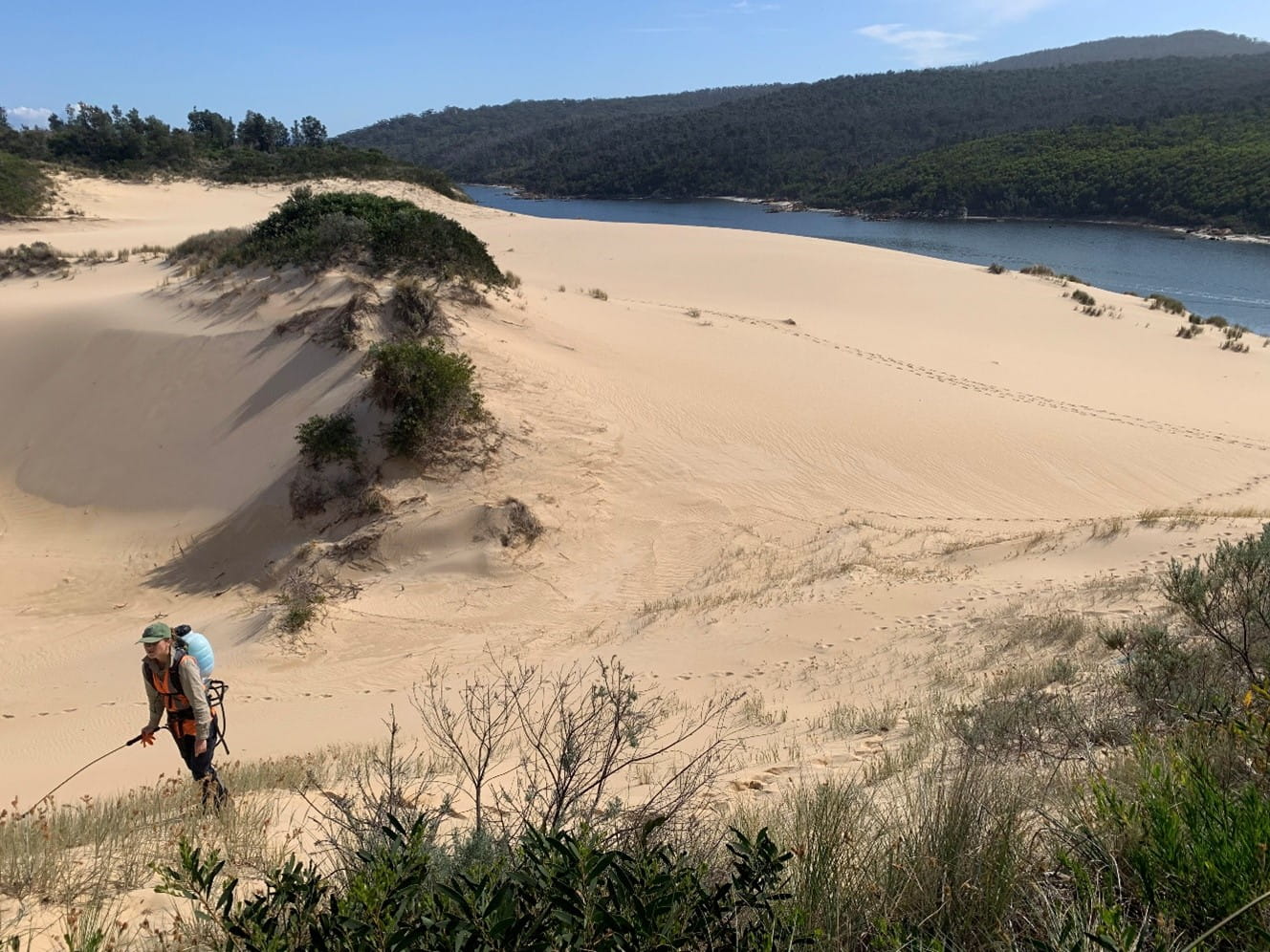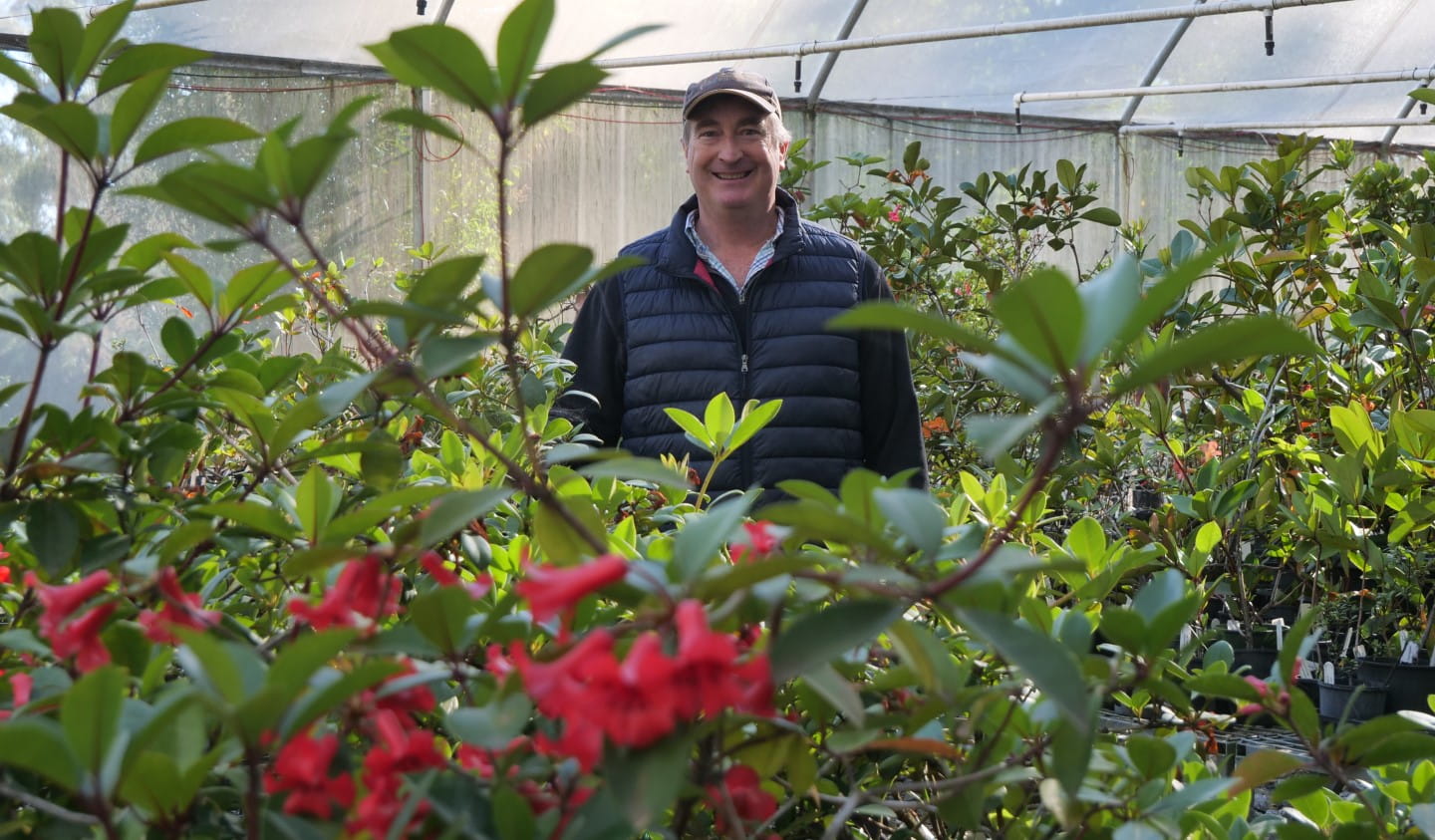Healing Country Together: Rock Art Protection in the Gariwerd Cultural Landscape
Monday 20 November, 2023
“Today was five years in the making as we begin healing Rock Art places in Gariwerd after inappropriate and no consent access by climbers over a period of decades. With the help of climbers, today we took that step together toward looking after Country. The proper way,” John Clarke, General Manager of Bio-cultural Landscapes, Eastern Maar Aboriginal Corporation.
Traditional Owners and Parks Victoria worked with rock-climbers and rope access technicians to remove more than 50 bolts and climbing chalk in one of Gariwerd’s Rock Art shelters and nearby quarry as part of a conservation and rehabilitation project.
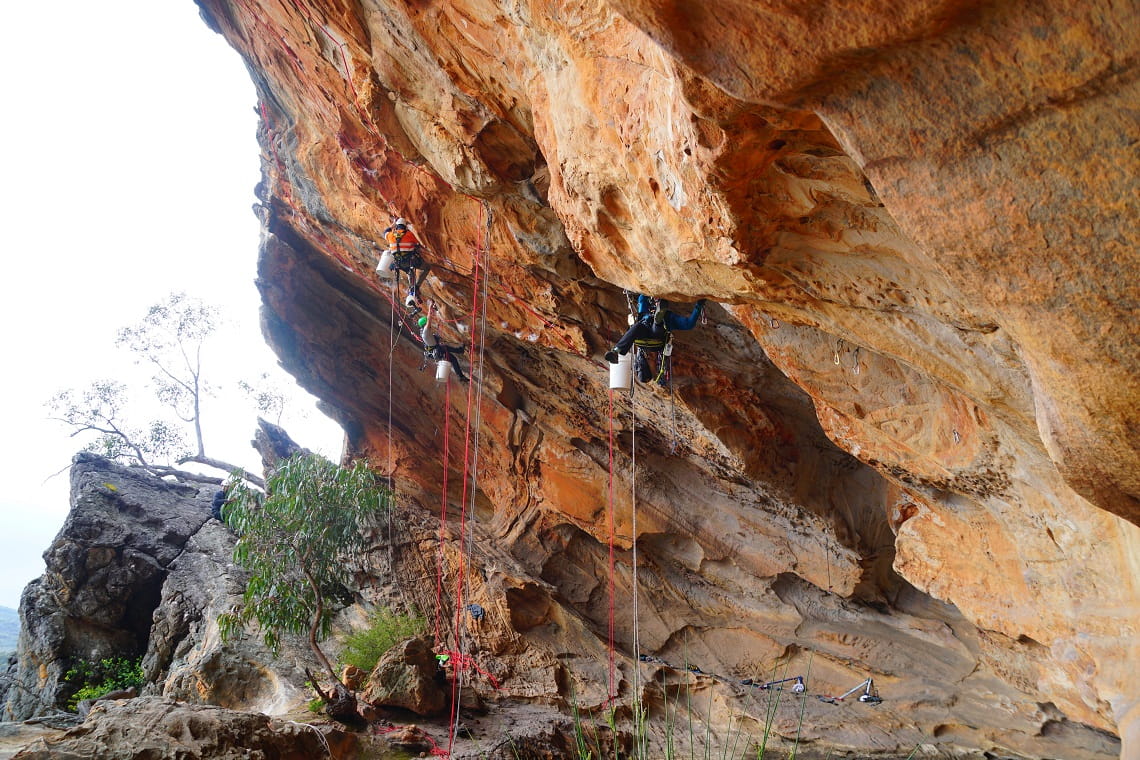 Specialist rope access technicians from the climbing community remove bolts in Cultivation Creek 19 (Millennium Cave) Rock Art shelter. Image credit: BGLC.
Specialist rope access technicians from the climbing community remove bolts in Cultivation Creek 19 (Millennium Cave) Rock Art shelter. Image credit: BGLC.
The work represents a turning point in efforts to protect the nationally heritage listed bio-cultural landscape led by the Barengi Gadjin Land Council Aboriginal Corporation (BGLC), Eastern Maar Aboriginal Corporation (EMAC) and Gunditj Mirring Traditional Owners Aboriginal Corporation (GMTOAC) in partnership with Parks Victoria (PV).
Troy Lovett, Gariwerd Project Officer with the GMTOAC said “it was important having the three Traditional Owner groups coming and working together for this significant healing work. We held a smoking ceremony at the site each morning acknowledging the place, the people, and the Country, as well as a closing smoking at the completion of the works.”
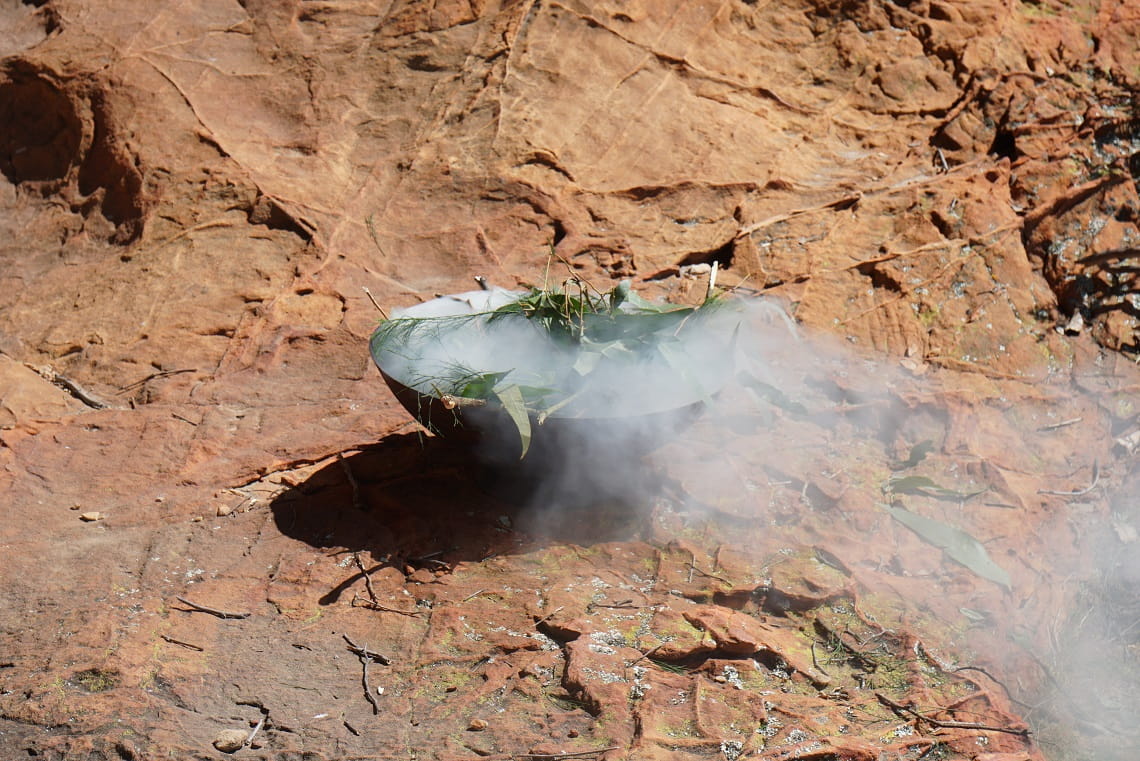
A smoking ceremony was held at the start of each day and on completion of the work.
The Barengi Gadjin Land Council extended an invitation to colleagues at the Taungurung Land and Waters Council to participate in the rehabilitation works.
“Traditional Owner groups working together in sharing knowledge and practice is an important aspect in meeting our obligations and commitment to Country, and our places of heritage value” Matt Burns, CEO TLaWC said.
For Jack Honeysett, Taungurung Field Service Officer the shared opportunity was outstanding: “Working and learning from other Mobs or Traditional Owner groups is a special opportunity in itself, so I felt very special being involved with the program and being part of the conservation and protection of Aboriginal rock art and Cultural sites."
The Greater Gariwerd Landscape Management Plan (2021), established Special Protection Areas (SPA) where a high level of management and protection is required including restrictions on some recreational activities to avoid impacts to natural and cultural values including Rock Art.
Due to the significant number of Rock Art places needing conservation works, a prioritisation matrix was developed so that Parks Victoria and Traditional Owners could first complete protection works at the most vulnerable places.
Traditional Owners, Cultural Heritage Advisors, and Rock Art Protection Specialists worked on the removal of chalk and graffiti. Bolt removal, chalk removal and patching work was done by specialist Industrial Rope Access Trade Association (IRATA) certified rope technicians from the climbing community and included detailed daily safety briefings for all workers on site.
Aaron Lowndes, whose company secured the Parks Victoria tender to remove bolts in the Rock Art shelter Cultivation Creek 19 (Millennium Cave), says the rehabilitation work is a chance to improve relationships between climbers and Traditional Owners.
“Climbing has always had a ‘do it first and ask for permission later’ approach. The issue is consent. We did not have consent to go into these areas. A better personal relationship with Traditional Owners is the key.”
“I think a very important message to send out publicly is that members of the climbing community are the ones that will remove these bolts, and that we do so enthusiastically because we recognise and support the right of Traditional Owners to determine for themselves what areas they deem important enough to protect,” Aaron says.
Between 2018-2020 Parks Victoria completed a condition assessment of all Rock Art places in Gariwerd. Detailed information about each place was recorded including updating location accuracy, identifying any human or natural impacts at each place, how extensive these are and if they impact the art.
Of the 103 Rock Art places in Gariwerd (Grampians National Park) listed on the Victorian Aboriginal Heritage Register, all had some form of impact.
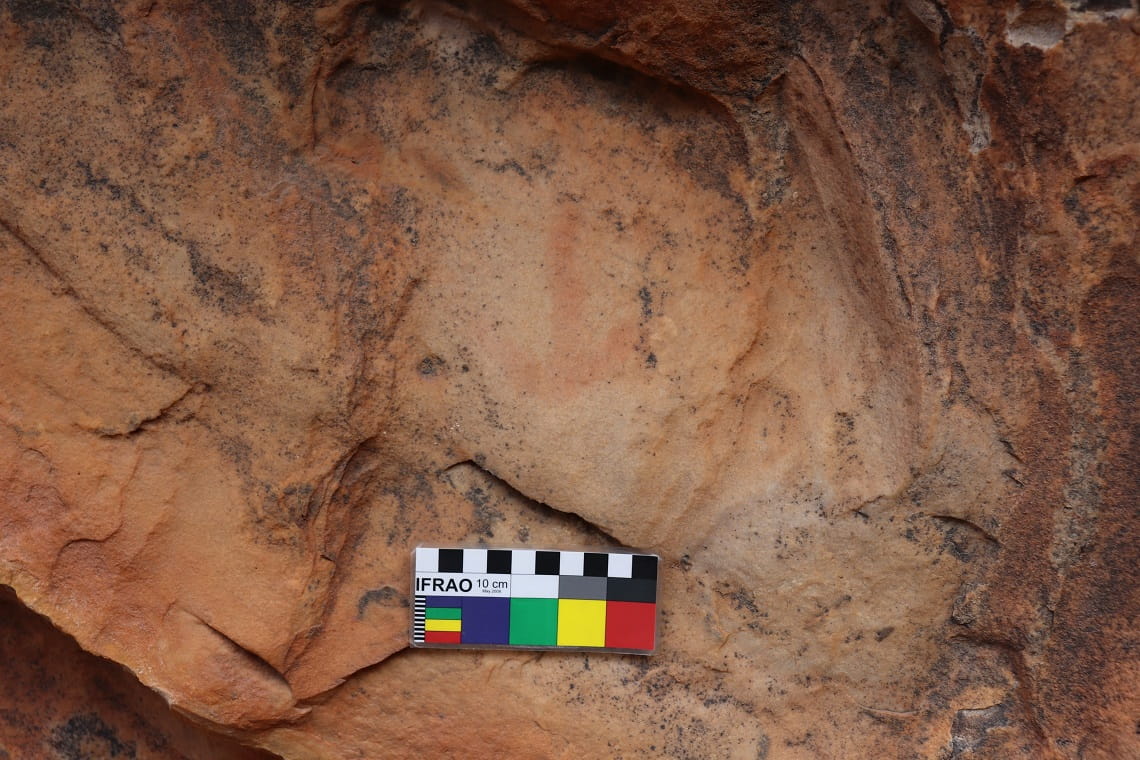
Gariwerd Rock Art
Rock Art painting in Gariwerd Cultural Landscape
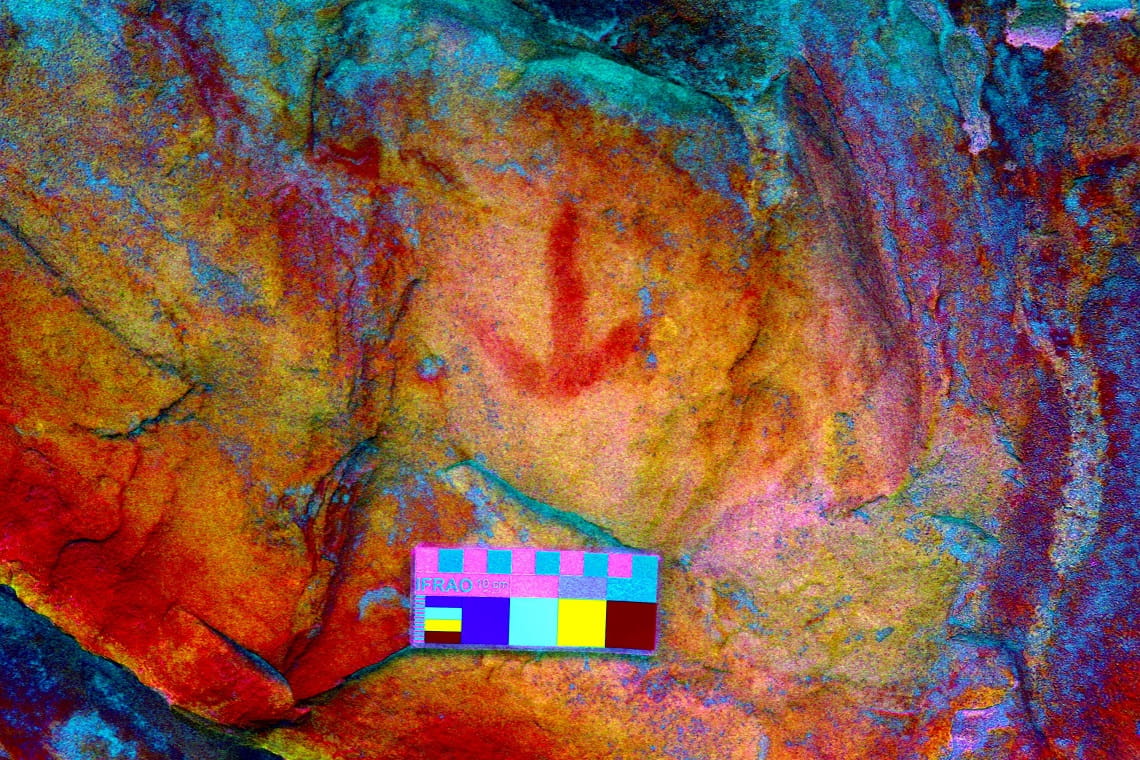
Gariwerd Rock Art enhanced
Rock Art images are enhanced using a tool called DStretch.
Rock Art is one of the most valuable links to our Old People that we have today. A direct link. This is not art as we know art to be. These are libraries full of our communal resources. They inform us of our place on Country. They inform us of our obligations, roles and rights. They give us our law and legitimacy. They instil into us our identity: Who we are.
“If our sovereignty was “written”, it was written here, by our Ancestors. By our law holders and still it is here, embedded into the solid rock that is our home.” John Clarke explains.
Best Practice: National Gariwerd Rock Art Management Forum
More than 150 Aboriginal and Torres Strait Islander rangers and Elders from across Australia gathered on the lands of the Djab Wurrung, Jadawadajali and Gunditjmara peoples to share knowledge and experiences of rock art in the Gariwerd Cultural Landscape.
In March this year the Barengi Gadjin Land Council Aboriginal Corporation, Eastern Maar Aboriginal Corporation and Gunditj Mirring Traditional Owners Aboriginal Corporation hosted the national Gariwerd Rock Art Management Forum supported by Parks Victoria and the Nulungu Research Institute at the University of Notre Dame Australia (UNDA).
More than 150 Aboriginal and Torres Strait Islander rangers and Elders from across Australia gathered on the lands of the Djab Wurrung, Jadawadajali peoples of the Wotjobaluk Nations and Gunditjmara peoples to share knowledge and experiences of Rock Art in the Gariwerd Cultural Landscape.
The forum was an opportunity for Aboriginal and Torres Strait Islander land managers to share challenges and discuss opportunities focused on caring for Rock Art and cultural heritage places.
A key outcome of the forum is developing a ‘Practical Guide for Indigenous Rangers in the Management of Rock Art Cultural Landscapes in Australia’.
The practitioners guide will not only address the tangible aspects of Rock Art places but also the intangible cultural values, agency, and authority embedded in Indigenous worldviews. The importance of Indigenous voices leading the conversation on the management of Rock Art cannot be understated and is long overdue.



